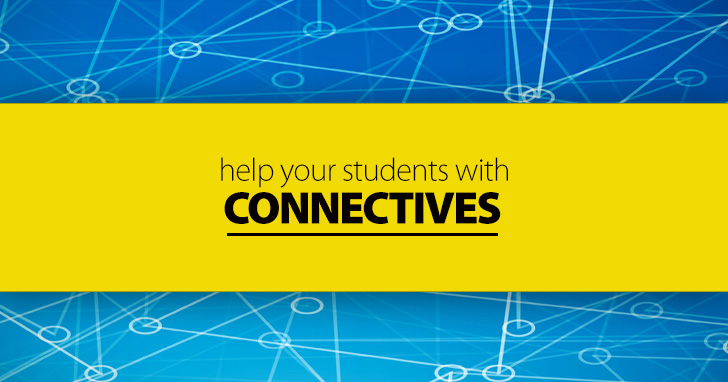Coordinate or Subordinate? Making Sense of English Conjunctions


And some students struggle with sentence structure so much that they opt to use the most simple construction they can to avoid grammar errors. Though this may be a good strategy for some students, for others they really need to push their language use to a more complex place. They must do this in order to sound more fluent and capable in English, and part of getting language to that more fluent place is using connectives. Connectives are grammatical constructions that link one idea to another. They help students use language to match their more complex thinking and ideas. This can sound intimidating to lower level students, but there’s good news. Connectives aren’t limited to just one grammatical strategy. Students can use many different grammar constructions to get their ideas across and still have them connected. Here we look at 4 types of connectives your students can use to express their ideas. You can teach just one or all of the strategies. Just tailor what you teach to the abilities of your students.

One of the most common relationships between ideas, and one that ESL students learn early in their English studies, is that of cause and effect. How did one thing influence or cause a second thing? Expressing these connections between ideas is important, and the good news is that there are several ways to do so.
One of the easiest constructions to show cause and effect is with the use of coordinating conjunctions. These conjunctions join two independent clauses to make a compound sentence, and even beginning students can learn how to use them. Conjunctions that communicate the idea of cause and effect are so and for. You can see in the sentences below how they link two ideas together to show their relationship.
Another simple way to show cause and effect between two ideas is through the use of prepositions. ESL students (and teachers) don’t automatically jump to prepositions to communicate cause and effect relationships, but there are some that fill that role. See how the prepositions in the following sentences link the ideas in the sentence.
Adverb clauses are a great way to show cause and effect relationships between ideas, and intermediate students should have some familiarity with them even if they aren’t completely comfortable using them yet. See how the following adverb clauses link ideas in a cause and effect relationship.
Transitions are a way to connect ideas that appear in separate sentences. Even beginning level students can learn to use transitions to link their thoughts. The following transitions show a cause and effect relationship between ideas.
Not all ideas have a cause and effect relationship. Sometimes, a speaker will want to link ideas together to stress that they are different or in contrast to one another. ESL students have many options when it comes to expressing contrast. In fact, they can use the same strategies they used to express cause and effect. Here are some ways you can encourage your students to link their ideas that show contrast.
Coordinating conjunctions are fairly simple grammar that beginning students should be able to use or at least understand. Thankfully English does include coordinating conjunctions which communicate an idea of contrast such as those in the following sentences.
Prepositions are simple grammar that can pack a punch of meaning. English does include several prepositions which communicate the idea of contrast.
Subordinating conjunctions such as even though, although, though, whereas, and while are great ways to communicate that ideas are in contrast. Intermediate students who have studied dependent clauses should be able to use this grammatical technique to link their ideas in a relationship of contrast.
Ideas of contrast don’t have to appear in the same sentence. Here are some transitions your students can use to show that the ideas in separate sentences are in contrast with each other.
Sometimes one action depends on a certain condition rather than another action. You can help your students express these necessary conditions by using connectives, no matter what level your students’ English is at.
While we most often think of the coordinating conjunction “or” as giving a choice, it can also be used to show that a certain condition must be met for another action to take place. Even beginning students can express the idea of necessary conditions this way.
You can spend days teaching your students about conditional statements. When you don’t have the time for that, show them how these subordinating conjunctions can show how certain conditions are necessary for a given outcome.
Using the transition “otherwise” is a great way to communicate a necessary condition without making a complex or complicated sentence in English.
Helping your students put their ideas together doesn’t have to be complicated. When you want your students to express ideas of cause and effect, contrast, or condition, try one of these connective strategies and be impressed with how well they can communicate their thoughts, even if they are using simple language to do it.